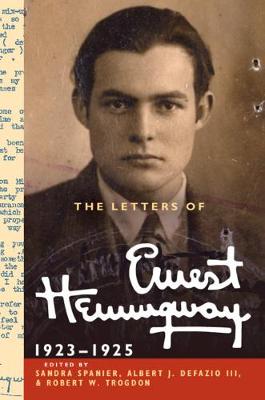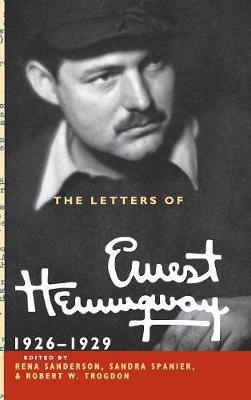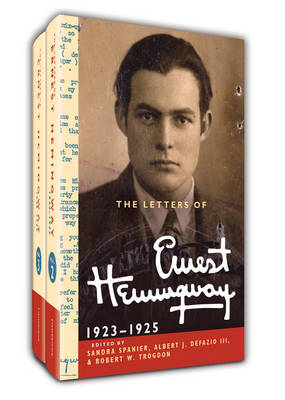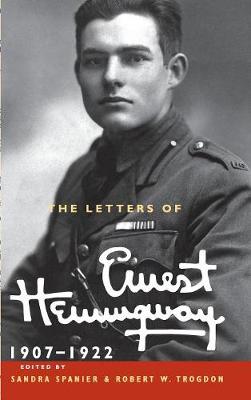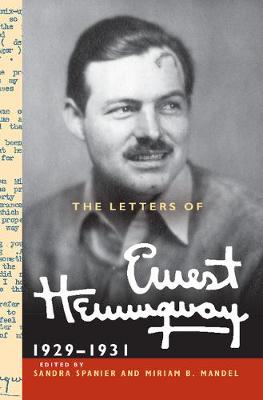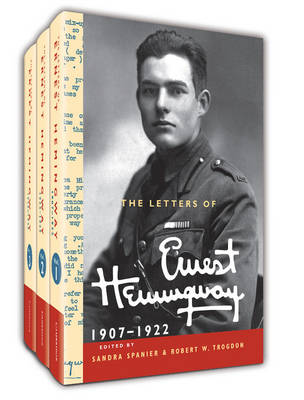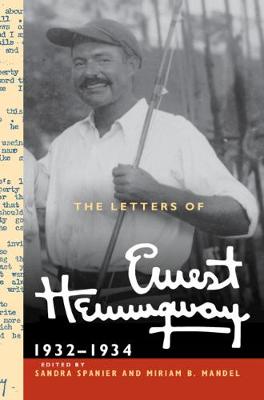The Cambridge Edition of the Letters of Ernest Hemingway
7 total works
The Letters of Ernest Hemingway: Volume 2, 1923–1925
by Ernest Hemingway
Published 30 September 2013
The Letters of Ernest Hemingway documents the life and creative development of a gifted artist and outsized personality whose work would both reflect and transform his times. Volume 2 (1923–1925) illuminates Hemingway's literary apprenticeship in the legendary milieu of expatriate Paris in the 1920s. We witness the development of his friendships with the likes of Sylvia Beach, F. Scott Fitzgerald, and John Dos Passos. Striving to 'make it new', he emerges from the tutelage of Ezra Pound and Gertrude Stein to forge a new style, gaining recognition as one of the most formidable talents of his generation. In this period, Hemingway publishes his first three books, including In Our Time (1925), and discovers a lifelong passion for Spain and the bullfight, quickly transforming his experiences into fiction as The Sun Also Rises (1926). The volume features many previously unpublished letters and a humorous sketch that was rejected by Vanity Fair.
The Letters of Ernest Hemingway, Volume 3: 1926–1929, featuring many previously unpublished letters, follows a rising star as he emerges from the literary Left Bank of Paris and moves into the American mainstream. Maxwell Perkins, legendary editor at Scribner's, nurtured the young Hemingway's talent, accepting his satirical novel Torrents of Spring (1926) in order to publish what would become a signature work of the twentieth century: The Sun Also Rises (1926). By early 1929 Hemingway had completed A Farewell to Arms. Hemingway's letters of this period also reflect landmark events in his personal life, including the dissolution of his first marriage, his remarriage, the birth of his second son, and the suicide of his father. As the volume ends in April 1929, Hemingway is setting off from Key West to return to Paris and standing on the cusp of celebrity as one of the major writers of his time.
The Letters of Ernest Hemingway Hardback Set Volumes 2 and 3: Volume 2-3
by Ernest Hemingway
Published 1 May 2015
The Letters of Ernest Hemingway document the life and creative development of a gifted artist and legendary personality whose work would both reflect and transform his times. Volume 2 (1923-1925) follows Hemingway's literary apprenticeship in expatriate Paris and the experiences that forged his earliest works, including the landmark novel The Sun also Rises (1926). It features a never-before-published short story that was rejected by Vanity Fair. Volume 3 (1926-1929) shows a rising star as he emerges from the literary Left Bank of Paris and moves into the American mainstream. As this collection of volumes ends, Hemingway is setting off from Key West to return to Paris and standing on the cusp of celebrity as one of the major writers of his time.
The Letters of Ernest Hemingway: Volume 1, 1907–1922
by Ernest Hemingway
Published 20 September 2011
With the first publication, in this edition, of all the surviving letters of Ernest Hemingway (1899–1961), readers will for the first time be able to follow the thoughts, ideas and actions of one of the great literary figures of the twentieth century in his own words. This first volume encompasses his youth, his experience in World War I and his arrival in Paris. The letters reveal a more complex person than Hemingway's tough guy public persona would suggest: devoted son, affectionate brother, infatuated lover, adoring husband, spirited friend and disciplined writer. Unguarded and never intended for publication, the letters record experiences that inspired his art, afford insight into his creative process and express his candid assessments of his own work and that of his contemporaries. The letters present immediate accounts of events and relationships that profoundly shaped his life and work. A detailed introduction, notes, chronology, illustrations and index are included.
The Letters of Ernest Hemingway, Volume 4, spanning April 1929 through 1931, featuring many previously unpublished letters, records the establishment of Ernest Hemingway as an author of international renown following the publication of A Farewell to Arms. Breaking new artistic ground in 1930, Hemingway embarks upon his first and greatest non-fiction work, his treatise on bullfighting, Death in the Afternoon. Hemingway, now a professional writer, demonstrates a growing awareness of the literary marketplace, successfully negotiating with publishers and agents and responding to fan mail. In private we see Hemingway's generosity as he provides for his family, offers support to friends and colleagues, orchestrates fishing and hunting expeditions, and sees the birth of his third son. Despite suffering injuries to his writing arm in a car accident in November 1930, Hemingway writes and dictates an avalanche of letters that record in colorful and eloquent prose the eventful life and achievements of an enormous personality.
The Letters of Ernest Hemingway Hardback Set Volumes 1-3: Volume 1-3
by Ernest Hemingway
Published 1 May 2015
The Letters of Ernest Hemingway document the life and creative development of a gifted artist and legendary personality whose work would both reflect and transform his times. Volume 1 (1907-1922) encompasses his youth, his experience in World War I and his arrival in Paris. Volume 2 (1923-1925) follows Hemingway's literary apprenticeship in expatriate Paris and the experiences that forged his earliest works, including the landmark novel The Sun Also Rises (1926). It features a never-before-published short story that was rejected by Vanity Fair. Volume 3 (1926-1929) shows a rising star as he emerges from the literary Left Bank of Paris and moves into the American mainstream. As this collection of volumes ends, Hemingway is setting off from Key West to return to Paris and standing on the cusp of celebrity as one of the major writers of his time.
The Letters of Ernest Hemingway, Volume 5, spanning 1932 through May 1934, traces the completion and publication of Death in the Afternoon and Winner Take Nothing. During this intensely active period, Hemingway hunts in Arkansas and Wyoming, fishes the waters off Key West and Cuba, revisits Madrid and Paris, and undertakes a long-anticipated African safari. He witnesses transitions at home and abroad: the deepening Great Depression, Prohibition-era rumrunning, revolution in Cuba, and political unrest in Spain. His readership and celebrity continue to expand as he begins writing for the new men's magazine Esquire. As the volume ends, Hemingway has just acquired his beloved boat, Pilar. The letters detail these events as well as his relationships with his family, friends, publishers, critics and literary contemporaries including editor Maxwell Perkins, Archibald MacLeish, John Dos Passos, Ezra Pound, and F. Scott Fitzgerald. Together the letters paint an intimate self-portrait of this multi-faceted, self-confident, energetic artist in his prime.
